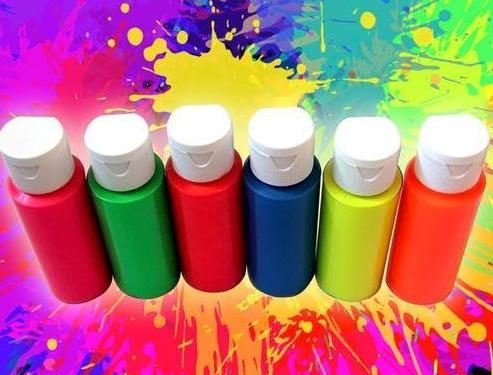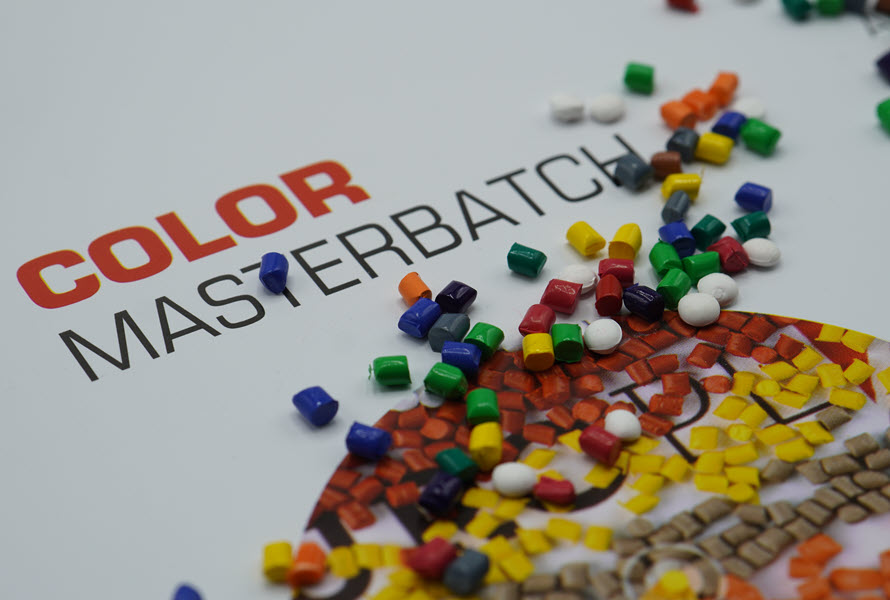To create eye-catching colors for industrial products, industrial pigments are indispensable. So what is industrial pigment? How is the application of industrial pigments in the field of plastic production? Let's find out through the article below.

Industrial pigment
1. What is industrial pigment?
Industrial pigments are produced by compressing pigments into a powder form. Industrial pigments are highly dispersible and insoluble in dispersion media. To color products, people often mix pigments with materials like paint, soil, plastic, etc. Industrial pigments are divided into two main categories: inorganic pigments and organic pigments. Based on the characteristics of each type, customers will choose industrial pigments suitable for their needs.
Read more: What is color masterbatch and how was masterbatch produced?
1.1. Inorganic pigments
Inorganic pigments are made from non-ferrous metals or insoluble metal salts. Their main components include carbon black and metal oxides or salts such as iron, titanium, barium, zinc, cadmium, and lead. Inorganic coloring compounds may contain artificial inorganic pigments and natural inorganic pigments.
Inorganic pigments are used more commonly than organic pigments because they are resistant to light, weather, heat, and solvents. However, inorganic pigments also have the disadvantage that the color is not as bright as organic pigments.
1.2. Organic pigments
Organic pigments are these powdery solid compounds that can produce a variety of colors. Organic pigments include Pigment azo, phthalocyanine pigment, anthraquinone pigment, and dye pigment.
The characteristics of organic pigments are clear, bright, and fresh color, alkali resistance, high acid resistance, and temperature stability. However, when compared with inorganic pigments, their ability to weather resistance, light resistance, and solvent resistance are weaker.
2. Methods to create color for plastic
Currently, to color plastic products, manufacturers often use 3 main methods: pigment, liquid color, and color masterbatch. Let's find out and compare the advantages and disadvantages of these 3 methods right below.
|
Method
|
Pigment
|
Liquid color
|
Color masterbatch
|
|
Definition
|
Is a pigment created from compressed chemical substances.
|
A liquid color solution, used in case the customer wants to color the product lightly.
|
Colored plastic beads, made from the base resin and additives to color the product.
|
|
Pros
|
- Does not contain solvents or impurities
- The color dissolves evenly, without clumping, color accumulation
- No metamorphosis when delivered
|
- Suitable for products that need light color or semi-transparent color
|
- Good dispersibility
- Help to increase some technical characteristics for finished products
- Durable with the weather
- Easy to deliver
|
|
Cons
|
- Colors are not bright.
- Weak color intensity.
- Higher degree of pollution (contaminates the production machinery as well as the surrounding environment because the pigment particles are very light and easy to fly)
|
- Dispersion is not good
- Harder to deliver than other substances
- High degree of pollution
|
- Preserve carefully, avoid exposure to extreme weather
|

Liquid color
Currently, color masterbatch is the most preferred solution by manufacturers due to its very fine dispersion, stability and gives the final product higher whiteness and transparency, more glossy, and smoother.
3. About EuroPlas
Due to the popularity of color masterbatch, there are countless suppliers of this product on the market. If you are inexperienced in this field, it is very likely that you will buy a poor quality product. We recommend that you choose a manufacturer that is reliable and has many years of experience.

European Plastic Joint Stock Company (EuP) is the world's largest filler masterbatch manufacturer. EuP's color masterbatch has been tested for quality and satisfied thousands of customers in more than 85 countries around the world. Currently, EuP offers color masterbatch with 9 main color codes and you can request a specific shade during the purchase process.
If you want to know more details about our color masterbatch product, please fill out this form or contact us by email/phone number. We are happy to answer any questions and concerns about your products!